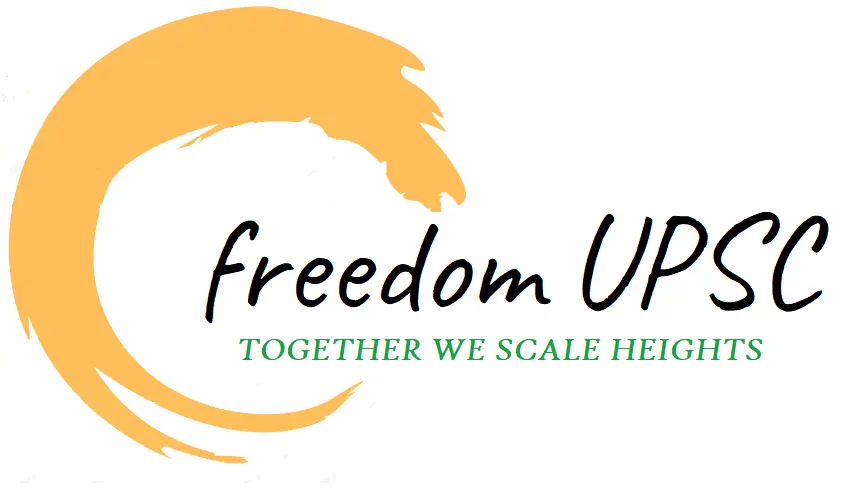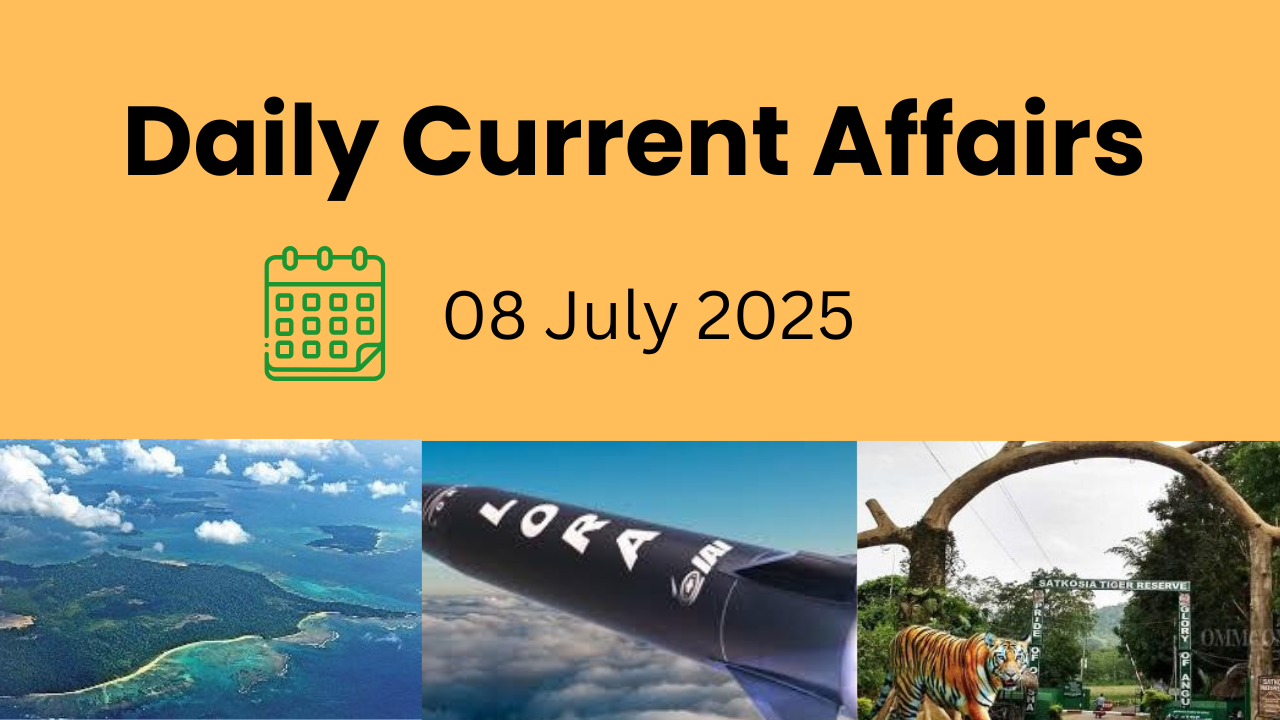1. Assessment of Earthquake Risk for the Great Nicobar Infrastructure Project (GNIP)
Context: The Great Nicobar Infrastructure Project (GNIP) is a massive developmental initiative planned for Great Nicobar Island (GNI). It includes the construction of a trans-shipment port, an international airport, urban infrastructure, and a 450 MVA gas and solar-based power plant.
Despite receiving environmental and preliminary forest clearance, the project has raised serious environmental and seismic safety concerns, particularly regarding the underestimation of earthquake and tsunami risks in the Environmental Impact Assessment (EIA).
Seismic Concerns: A High-Risk Zone
Great Nicobar Island lies in Seismic Zone V, the highest seismic risk category in India. This region is located along the Andaman Subduction Zone, where the Indian Plate is diving beneath the Burmese Microplate, a process known as subduction. This tectonic setting is inherently prone to major earthquakes and tsunamis.
The 2004 Indian Ocean tsunami, one of the deadliest natural disasters in history, severely impacted the Nicobar Islands, highlighting the region’s geological vulnerability.
Understanding Earthquakes:
An earthquake is a sudden and violent shaking of the ground, typically caused by movement along fault lines due to tectonic plate activity. The Earth’s outermost layer, the lithosphere, is broken into tectonic plates that float on the viscous mantle. Their movement builds up stress in the crust, which is eventually released as seismic energy.
Key Terms:
- Epicenter: The point on the Earth’s surface directly above the origin of the earthquake.
- Seismic Waves: Energy waves generated by earthquakes, causing the ground to shake.
Measuring Earthquake Activity:
Earthquakes are quantified using the following scales:
- Richter Scale: Measures magnitude, or the amount of energy released (ranges from 0 to 10).
- Mercalli Intensity Scale: Measures the intensity, or the impact and visible damage on the surface.
Seismic activity is monitored using instruments called seismometers, which detect seismic waves.
Types of Seismic Waves:
Body Waves (Travel through Earth’s interior)
- P-Waves (Primary Waves):
- Fastest seismic waves.
- Move in a compressional manner.
- Travel through solids, liquids, and gases.
- S-Waves (Secondary Waves):
- Move in a transverse manner.
- Travel only through solids.
- More damaging than P-waves.
Surface Waves (Travel along Earth’s surface):
- Slower than body waves.
- Cause greater destruction due to higher amplitude.
India’s Earthquake Vulnerability:
- 58.6% of India’s landmass is prone to moderate to severe seismic activity.
- Seismic Zones of India:
- Zone V: Extremely high risk (~11% of India).
- Zone IV: High risk (~18%).
- Zone III: Moderate risk (~30%).
- Zone II: Low risk (remainder).
The GNIP is located in Zone V, making it one of the most earthquake-sensitive areas in the country.
Environmental and Social Implications:
Aside from seismic risks, the GNIP has raised concerns over:
- Massive tree-felling and biodiversity loss.
- Displacement and disruption of indigenous tribes.
- Disturbance of marine ecosystems.
Due to these risks, the National Green Tribunal (NGT) has ordered a re-evaluation of the project’s environmental impact.
Additional Insights:
- The 2004 tsunami was triggered by a magnitude 9.1 earthquake along the same tectonic boundary near Sumatra.
- Tsunamis are caused primarily by vertical displacement of the seafloor during subduction zone earthquakes.
- Early-warning systems and disaster-resilient infrastructure are essential in high-risk zones like Great Nicobar.
Conclusion:
The Great Nicobar region’s seismic volatility, coupled with environmental fragility, necessitates a thorough and transparent reassessment of GNIP. Ignoring the geological realities could lead to catastrophic consequences, both for infrastructure and local communities.
2. Studying in the Mother Tongue Instills Strong Values: Chief Justice of India
Context: The Chief Justice of India (CJI) recently highlighted the power of mother tongue-based education, calling it not just a tool for learning but a foundation for moral development, cultural identity, and cognitive growth. His remarks reignited the national conversation on how education in one’s native language nurtures both intellect and character.
India’s Linguistic Richness:
India is one of the most linguistically diverse nations in the world:
- Over 1,300 recognized mother tongues
- 122 major languages spoken by more than 10,000 people each
- Indigenous linguistic traditions rooted in ancient Gurukuls and Madrasas, where learning took place in Sanskrit, Pali, Persian, and regional dialects
However, colonial-era policies imposed English as the dominant medium, marginalizing native languages and widening the cultural-linguistic divide, the impact of which is still visible today.
Mother Tongue: More Than a Medium
A mother tongue is not just a communication tool — it is a carrier of values, traditions, identity, and indigenous knowledge systems. Language shapes how we think, relate, and understand the world around us. Teaching in the mother tongue is thus a cultural revival as much as it is an educational reform.
Policy Backing and Reforms:
Several key commissions and policies have long supported native-language instruction, especially at the primary level:
- Radhakrishnan Commission (1948)
- Mudaliar Commission (1952–53)
- Kothari Commission (1964–66)
- National Policy on Education (1986)
More recently, transformative frameworks have emerged:
- National Education Policy (NEP) 2020 and National Curriculum Framework 2023: Advocate mother tongue or home language as the medium of instruction at least until Grade 5, preferably till Grade 8 and beyond
- Right to Education Act, 2009: Recommends mother tongue instruction “as far as practicable”
- Flagship initiatives:
- NIPUN Bharat: Foundational literacy and numeracy in native languages
- Vidya Pravesh and NISHTHA FLN: Early-grade learning support in regional tongues
- CBSE language mapping: Inclusion of 52 Indian languages including Bhutia, Kuki, and Sherpa
Why Teaching in the Mother Tongue Works:
Cognitive and Academic Advantages:
- Children learn faster and more effectively when taught in a familiar language.
- Enhances critical thinking, creativity, and problem-solving skills.
Cultural Identity and Self-Esteem:
- Promotes confidence and pride in one’s heritage.
- Preserves linguistic diversity and connects children to ancestral knowledge.
Improved Learning Outcomes:
- According to UNESCO and UNICEF, mother tongue education results in better literacy and numeracy in early grades.
- Leads to higher student participation and lower dropout rates.
Challenges in Implementation:
Global Competitiveness Concerns:
- Overemphasis on native languages might reduce English proficiency, which is crucial in global academia and job markets.
Logistical Hurdles:
- In multilingual regions, selecting a single mother tongue is complex.
- There’s a lack of qualified teachers fluent in local languages and a shortage of quality learning materials.
Transition Issues:
- Switching from mother tongue to English in higher grades can be difficult, especially for technical and scientific subjects.
- Students may become dependent on their native language, reducing fluency in second or third languages.
Way Forward: A Balanced Approach
- Promote bilingual and multilingual education: Begin with the mother tongue, gradually integrating English and other national/international languages.
- Invest in teacher training for multilingual instruction and develop high-quality educational materials in regional languages.
- Encourage regional flexibility, allowing states to tailor approaches while aligning with national education goals.
- Leverage technology to create digital tools and e-learning platforms in native languages to expand access and inclusion.
Extra Insight: Globally, countries like Finland, South Korea, and Japan prioritize native language instruction in early education, and their students consistently top international learning assessments such as PISA. This shows that strong foundational learning in one’s own language does not hinder global competitiveness but enhances it when paired with second-language instruction.
Conclusion: Education in the mother tongue is more than just an academic tool — it is a powerful means of preserving heritage, building identity, and unlocking a child’s full potential. As India reimagines its education system, balancing linguistic pride with global preparedness will be key to shaping a generation that is both rooted and ready.
3. Cooperatives: Strengthening the Economic Foundation of India
Context: In a significant step towards empowering the cooperative movement in India, the Union Cooperation Minister recently laid the foundation stone for India’s first national-level cooperative university, Tribhuvan Sahkari University (TSU), in Anand, Gujarat—the historic land of Amul and India’s White Revolution. The minister emphasized that cooperative societies play a vital role in India’s economic progress, especially in uplifting rural and marginalized communities.
What Are Cooperatives?
A cooperative is a member-owned and member-driven organization, where individuals come together to fulfill shared economic, social, or cultural needs. Every member has equal voting rights (one-member, one-vote), regardless of their financial stake.
Unlike profit-maximizing corporations, cooperatives prioritize member welfare, collective growth, and community empowerment.
Types of Cooperatives in India: India’s cooperative movement is vast and diverse, covering almost every sector of the economy:
- Agricultural Cooperatives:
- Dairy Cooperatives: Promote milk production and processing (e.g., Amul).
- Farmers’ Cooperatives: Provide access to seeds, fertilizers, credit, and markets.
- Fishermen Cooperatives: Help in resource management and collective sale of catch.
- Consumer Cooperatives: Operate fair-price shops and stores to offer goods at reasonable prices.
- Worker Cooperatives: Owned and managed by workers themselves, often in artisan and small-scale industries.
- Credit Cooperatives: Cooperative banks and credit societies offer financial services to members, especially in underserved regions.
- Housing Cooperatives: Enable people to build or manage affordable housing, especially in urban India.
Constitutional and Legal Backing: The 97th Constitutional Amendment Act (2011) provided a strong constitutional foundation for cooperatives:
- Recognized the right to form cooperative societies as a fundamental right (Article 19).
- Introduced Article 43-B under Directive Principles for promoting cooperatives.
- Added Part IX-B to the Constitution, laying down rules for cooperative governance, transparency, and elections.
- Empowered Parliament to legislate on multi-state cooperative societies, while states govern others.
Why Cooperatives Matter: Pillars of India’s Growth
Rural Empowerment:
- With over 65% of India’s population living in rural areas, cooperatives are essential in providing access to credit, markets, and infrastructure.
- Primary Agricultural Credit Societies (PACS) are the first point of contact for rural credit.
Support for Small Producers:
- Cooperatives give marginal farmers, artisans, women, and workers the power of collective bargaining and independence from exploitative middlemen.
- Example: Amul transformed India’s dairy sector by empowering millions of landless dairy farmers.
Self-Reliance and Localization:
- Cooperatives encourage local resource pooling, community ownership, and reduction in dependence on corporates or external markets.
- They promote the spirit of Atmanirbhar Bharat by making communities self-sustaining.
Institutional Support and Policy Framework:
- Cooperative Societies Act: Administered by state governments and tailored to local needs.
- Multi-State Cooperative Societies Act, 2002: Regulates cooperatives operating across states.
- National Cooperative Policy (2002): Focuses on improving governance, transparency, and financial sustainability.
- Ministry of Cooperation (Established 2021): A dedicated ministry to strengthen, modernize, and reform cooperatives across India.
Inspiring Success Stories:
- Amul (Gujarat): From milk pooling to global dairy exports, Amul has revolutionized rural livelihoods.
- Water Cooperatives in Maharashtra: Efficient management of irrigation and water resources, ensuring better crop yields.
- Kerala’s Cooperative Model: Known for its robust cooperative network in banking, agriculture, housing, and retail.
Challenges Facing Cooperatives:
- Governance Issues: Political interference, poor leadership, and lack of accountability remain widespread.
- Access to Capital: Many cooperatives struggle with inadequate funding and reliance on government aid.
- Competition: Growing dominance of private corporates and MNCs threatens cooperative sustainability.
- Technology Deficit: Digital transformation is slow, limiting competitiveness and operational efficiency.
The Way Forward:
- Promote Professional Management: Capacity building and training for cooperative leaders.
- Technology Integration: Introduce digital platforms and tools for better record-keeping, market access, and transparency.
- Encourage Youth Participation: Attract the younger generation through entrepreneurship opportunities within the cooperative sector.
- Global Linkages: Facilitate export-oriented cooperatives, especially in organic farming, handlooms, and artisanal products.
Conclusion: Cooperatives are not just business entities — they are the lifeblood of inclusive development, social justice, and community empowerment in India. By nurturing this third economic pillar—alongside the public and private sectors—India can create a model of development that is equitable, democratic, and self-sustaining.
4. Satkosia Tiger Reserve: A Biodiversity Treasure Facing New Threats
Context: A fresh environmental controversy has emerged as the Odisha government floated a tender to build a high-level bridge over the Mahanadi River, close to the Satkosia Tiger Reserve—an ecologically fragile and biologically rich landscape. Conservationists have raised alarms, warning that such development could disrupt the natural habitats and migratory paths of several endangered species.
Where is Satkosia Tiger Reserve Located?
Situated in the heart of Odisha, the Satkosia Tiger Reserve spans across four districts: Angul, Cuttack, Boudh, and Nayagarh. It covers an expansive area of 1,136.70 sq. km, which includes a buffer zone of 440.26 sq. km.
The reserve encompasses two adjoining wildlife sanctuaries:
- Baisipalli Sanctuary
- Satkosia Gorge Sanctuary
It also forms a vital part of the Mahanadi Elephant Reserve, enhancing its significance as a wildlife corridor in eastern India.
Unique Geographical Features: The terrain of Satkosia is hilly and rugged, interspersed with steep slopes and narrow valleys. The Mahanadi River, one of India’s major rivers, flows through the heart of the reserve, creating dramatic gorges and enriching the biodiversity.
- Elevation ranges from 37 meters to 932 meters
- Lowest point: Katrang
- Highest point: Sunakhania
Importantly, Satkosia lies at the confluence of two major biogeographic zones:
- The Eastern Ghats
- The Deccan Peninsula
This unique positioning makes it a crucial ecological transition zone, hosting species from both regions.
Rich and Diverse Vegetation: The reserve’s forest cover is primarily composed of North Indian tropical moist deciduous forests and moist peninsular low-level sal forests.
Key Flora:
- Sal (Shorea robusta): The dominant tree species forming dense and gregarious stands
- Asan (Terminalia alata)
- Dhaura (Anogeissus latifolia)
- Bamboo (Dendrocalamus strictus)
- Simal (Bombax ceiba)
These forests offer essential cover, nesting, and foraging spaces for a wide variety of fauna.
Faunal Diversity: Home to Endangered and Iconic Species
Satkosia is a biodiversity hotspot, home to a wide array of mammals, birds, reptiles, and amphibians.
Notable Wildlife:
- Tiger (Panthera tigris)
- Leopard
- Asiatic Elephant
- Spotted Deer (Chital)
- Sambar Deer
- Four-horned Antelope (Chowsingha)
- Barking Deer
- Indian Bison
- Sloth Bear
- Dhole (Wild Dog)
- Jackal
- Indian Giant Squirrel
- Porcupine
Critically Endangered Reptiles:
- Freshwater Crocodile (Crocodylus palustris)
- Gharial (Gavialis gangeticus)
These species depend on the riverine ecosystems and undisturbed forest corridors for survival.
Emerging Threats and Conservation Challenges:
The proposed bridge construction near the tiger reserve poses serious risks:
- Habitat fragmentation: Affects wildlife movement and breeding patterns
- Noise and human intrusion: Disturbs sensitive species, especially nocturnal and shy animals
- River pollution and sedimentation: Threatens aquatic life, including endangered crocodilians
In recent years, tiger reintroduction efforts in Satkosia have faced setbacks due to conflict with local communities and poaching threats. Any additional infrastructure projects must be assessed with caution and ecological sensitivity.
Additional Insights:
- Satkosia Gorge, formed by the Mahanadi cutting through the Eastern Ghats, is considered one of India’s most scenic river gorges.
- It is also a significant ecotourism destination, drawing visitors for boat safaris, birdwatching, and jungle treks.
- The reserve forms part of the Eastern Highlands Moist Deciduous Forests ecoregion, one of the globally recognized biodiversity hotspots.
Conclusion: The Satkosia Tiger Reserve is much more than a protected forest—it’s a lifeline for Odisha’s wildlife and a living testament to India’s rich ecological heritage. While infrastructure development is important, it must not come at the cost of irreversible ecological damage. Careful environmental assessments, consultation with wildlife experts, and inclusive local engagement are crucial before moving forward.
5. AIR LORA: Game-Changer in India’s Aerial Strike Arsenal
Context: In a significant move to enhance its long-range precision strike capabilities, the Indian Air Force (IAF) is reportedly evaluating the acquisition of the AIR LORA missile system. This advanced air-launched ballistic missile could provide the IAF with a major strategic edge, especially in high-risk and high-value strike missions.
What is AIR LORA?
The AIR LORA (Long-Range Artillery) is a next-generation air-launched ballistic missile, developed by Israel Aerospace Industries (IAI). It is designed to strike hardened targets, including enemy command centers, airbases, critical infrastructure, and naval vessels operating in complex coastal environments.
Unlike traditional cruise missiles, AIR LORA delivers high-speed, high-precision, and autonomous deep-strike capabilities from the air.
Key Features and Specifications:
- Missile Type: Short-range air-to-ground ballistic missile
- Length: 5.2 meters
- Diameter: 0.624 meters
- Launch Weight: Approx. 1,600 kg
- Payload Capacity: Up to 600 kg, with options for:
- High Explosive (HE) warhead
- Submunitions
Superior Combat Capabilities:
- Fire-and-Forget: Once launched, the missile requires no further guidance from the aircraft, allowing the pilot to retreat safely.
- Mid-Flight Retargeting: Unique ability to alter target coordinates during flight, enabling dynamic battlefield adaptability.
- High Survivability:
- Equipped with advanced inertial navigation (INS) and Global Navigation Satellite System (GNSS) with robust anti-jamming technology.
- Performs reliably in all-weather, day/night conditions, and heavily contested airspaces.
- Supersonic Speed: Travels at supersonic velocity, making it difficult to intercept.
- Terminal Trajectory Shaping: Enables a 90° vertical dive attack angle, maximizing penetration power and target destruction.
- Combat-Proven Navigation System: Ensures high accuracy and mission success even in GPS-denied environments.
Platform Compatibility and Ease of Integration:
The AIR LORA system is designed for simple and rapid integration into various airborne platforms. It can function:
- As a stand-alone weapon with internal targeting
- Or through integration into an aircraft’s avionics system
Its plug-and-play architecture, combined with autonomous functionality, makes it operator-friendly and suitable for rapid deployment in combat scenarios.
Strategic Significance for India:
With a strike range of up to 400 km, AIR LORA allows Indian aircraft to hit targets deep inside enemy territory without entering hostile air defense zones. This provides a significant force multiplier, especially during surgical strikes, counterforce operations, or in deterring strategic threats across both western and eastern fronts.
In the evolving era of high-speed, precision-guided weaponry, AIR LORA aligns with India’s doctrine of “stand-off strikes”—delivering maximum impact while minimizing pilot and platform vulnerability.
Did You Know?
- AIR LORA is a variant of the LORA missile, initially developed as a land-launched tactical ballistic missile by IAI.
- Its airborne adaptation offers greater operational flexibility and is particularly valuable for multi-domain warfare where air, land, and sea threats are interconnected.
Conclusion: A New Era of Air Dominance
If inducted, AIR LORA would significantly expand India’s strike envelope, empowering the Indian Air Force with a highly accurate, survivable, and flexible deep-strike weapon. As aerial warfare becomes increasingly precision-oriented and technology-driven, missiles like AIR LORA will be essential tools in securing strategic deterrence and operational supremacy.
6. Pethia dibrugarhensis: A New Jewel in India’s Freshwater Biodiversity
Context: In a remarkable addition to India’s rich aquatic diversity, a team of Indian ichthyologists has discovered a new species of freshwater fish in the Brahmaputra River near Maijan Ghat, Dibrugarh (Assam). The species has been named Pethia dibrugarhensis, in honor of the region where it was found.
This discovery further highlights the ecological richness of Northeast India, particularly the Brahmaputra basin, which is recognized as one of the global hotspots for freshwater biodiversity.
Taxonomy and Classification:
- Scientific Name: Pethia dibrugarhensis
- Family: Cyprinidae (Carp family)
- Genus: Pethia
- Common Group: Barbs – a sub-group of small, often colorful freshwater fishes
This newly identified species belongs to the same family as carps and minnows, many of which are of both ecological and commercial significance.
Habitat and Ecosystem:
- The species was found inhabiting moderately fast-flowing stretches of the Brahmaputra River.
- It thrives in a mixed substrate environment consisting of mud, sand, and gravel-stone beds.
- Pethia dibrugarhensis is part of a complex community of small indigenous freshwater fishes that coexist in the region—indicating a delicate and interdependent aquatic ecosystem.
Such discoveries underline the importance of conserving riverine habitats, especially in biogeographically unique regions like Assam.
Unique Morphological Features:
This species stands out due to a distinct combination of physical traits:
- Incomplete lateral line – an interrupted line of sensory organs running along the side of the body, which helps fish detect movement and vibrations.
- A large, prominent black blotch on the caudal peduncle (the narrow part before the tail fin) that extends both dorsally and ventrally.
- Absence of barbels – unlike many other barbs, it lacks the slender, whisker-like structures near the mouth.
- No humeral spots (dark markings typically found near the gill cover).
These unique traits help clearly distinguish Pethia dibrugarhensis from other closely related species.
What Are Barbs?
- Barbs are a diverse group of freshwater fishes belonging to the genus Pethia and other related genera in the Cyprinidae family.
- Native to Asia, Europe, and Africa, they are known for:
- Small size
- Hardy nature
- Often vibrant colors
- Presence of barbels (although Pethia dibrugarhensis is an exception)
- Popular among aquarists, barbs like the Rosy Barb and Tiger Barb are widely bred for ornamental fish keeping.
- Ecologically, barbs play an important role in river and stream ecosystems by contributing to the food chain and nutrient cycling.
Why This Discovery Matters:
- It adds to the growing list of indigenous freshwater species found in the Indian subcontinent—critical for biodiversity indexing and conservation efforts.
- Helps in ecological mapping of sensitive habitats like the Brahmaputra, which are under pressure from pollution, sand mining, and hydrological alterations.
- Enhances scientific understanding of evolutionary diversity within Cyprinids.
- Could have potential conservation and even ornamental value, given the distinct appearance of the species.
Conclusion: A Wake-Up Call for Conservation
The discovery of Pethia dibrugarhensis is not just a scientific milestone—it is a reminder of the hidden wonders still thriving in India’s rivers. However, with increasing threats to freshwater ecosystems, the urgent need to protect habitats like the Brahmaputra cannot be overstated.




